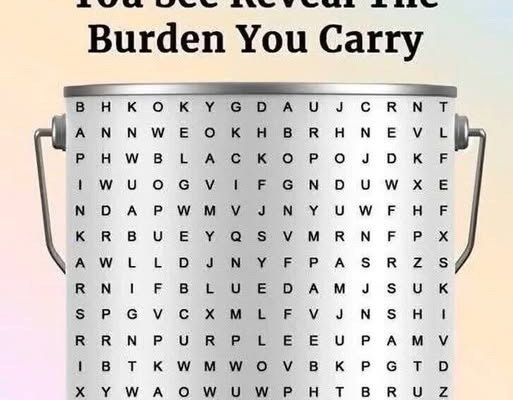Colors speak long before words ever do. Before we open our mouths, the shades around us — the ones we wear, paint our walls with, or instinctively gravitate toward — begin communicating what’s going on inside. Color isn’t just decoration. It’s a language of emotion and energy, a reflection of the hidden states of mind that even we don’t always notice.
Most people think of color in simple terms: I like blue. I dislike yellow. But the reality is far more intricate. Our color choices are rarely random. They’re emotional fingerprints — indicators of what we crave, fear, or suppress. Every color we reach for carries meaning, and every hue we avoid speaks just as loudly.
Red: The Pulse of Life
Red is intensity incarnate. It’s the color of heartbeat, blood, passion, and power. When you’re drawn to red, it often signals a need for vitality — to feel more alive, more visible, more in control. It’s the shade of movement, drive, and desire.
But red also carries warning. It can signal anger or inner restlessness, a subconscious cry for release. People who wear red during low periods often do so unconsciously, as if calling energy back into their system. It’s the color that shouts when the rest of the world goes quiet.
On the other hand, those who avoid red may be avoiding confrontation — not just with others, but with themselves. It’s a color that exposes, demanding boldness and passion. Steering clear of it can reflect a wish to stay unnoticed, to remain emotionally guarded.
Blue: Serenity and Solitude
Blue is calmness embodied. It’s the color of wide horizons, of still water, of the mind when it finally exhales. When you’re drawn to blue, you’re often seeking peace or stability. It restores clarity, balances emotions, and creates the illusion of control in chaos.
That’s why hospitals, offices, and meditation spaces often lean on blue tones — they quiet the noise.
Yet blue also has a lonely side. It can reflect distance or detachment, especially in those who choose it exclusively. People immersed in blue may crave connection but fear emotional intensity. Blue soothes, but it can also isolate. It’s the color of safe waters — and of oceans that separate.
Green: Renewal, Healing, and Grounding
Green connects us to nature and growth. It’s the color of balance — where calm (blue) meets energy (yellow). When you crave green, your mind may be reaching for renewal or grounding after a period of instability.
In hospitals and recovery centers, muted greens are used to foster healing and trust. Psychologically, green restores a sense of wholeness — it tells the nervous system that safety has returned.
Avoiding green can hint at resistance to change or discomfort with vulnerability. Green invites openness; rejecting it can suggest a reluctance to reconnect with others or to face new beginnings
Yellow: Joy and the Need for Light
Yellow radiates optimism, curiosity, and intellect. It’s the spark that wakes the mind, the warmth that breaks tension. People drawn to yellow are often craving clarity, enthusiasm, or a fresh start.
But yellow is also the most visible color — and with that brightness comes exposure. Those who avoid it may do so because they fear being seen, judged, or misunderstood. In its excess, yellow can even stir anxiety — too much light becomes blinding.
When life feels heavy, small doses of yellow can help reintroduce lightness and hope. That’s why it often appears during new chapters — after heartbreak, loss, or long winters of the mind.
Purple: Mystery, Depth, and Transformation
Purple sits between the energy of red and the calm of blue — a color of contradiction and complexity. It’s the shade of introspection, spirituality, and change. Historically associated with royalty and mysticism, purple invites deep reflection.
When people gravitate toward purple, they’re often navigating transformation — emotional, creative, or spiritual. It signals a readiness to evolve, even if the process feels uncertain.
Avoiding purple, on the other hand, can reflect discomfort with ambiguity. Some resist it because it represents depth — and depth can be daunting.
Black, White, and Gray: The Language of Contrast
Not all emotions live in bright hues. The neutrals — black, white, gray — speak quietly but powerfully.
Black, often misunderstood as purely somber, actually symbolizes control and self-protection. People who choose black frequently seek strength and boundaries. It’s a psychological armor, a color that absorbs rather than reflects. In times of chaos or grief, black can provide a sense of stability — a safe emotional container.
White carries the opposite energy. It’s the color of simplicity, cleansing, and possibility. To wear or surround yourself with white often signals a desire for renewal or distance from emotional clutter. Yet in many cultures, white also signifies mourning — a transition rather than an end.
Gray represents neutrality and detachment — a pause between extremes. It’s common during periods of emotional fatigue, when people seek rest from the chaos of feeling too much. Prolonged attraction to gray, however, can point to stagnation or emotional numbness.
The Psychology Behind Color
Our reactions to color aren’t just cultural; they’re physiological. The human brain responds to color wavelengths in measurable ways — red increases heart rate, blue lowers blood pressure, yellow stimulates mental activity. Over time, these associations become layered with experience, shaping both personal and collective meaning.
Culture deepens this language. In Western contexts, white may mean purity; in parts of Asia, it represents loss. Red can mean love in one setting, danger or celebration in another. Colors don’t carry universal truths — they reflect shared stories and learned emotions.
But beneath cultural variations lies a consistent pattern: color bypasses logic. It hits emotion first, thought second. That’s why certain shades can instantly shift our mood before we can articulate why.
Everyday Color, Everyday Meaning
The green mug you reach for every morning, the black hoodie you can’t part with, the burnt-orange sweater that feels “right” when you’re rebuilding — these aren’t random choices. They’re reflections of what your psyche craves at that moment.
After a breakup, people often gravitate toward muted or dark tones — grounding colors that mirror introspection. During fresh starts or creative bursts, lighter and warmer hues tend to dominate. Our shifting color preferences trace our inner weather.
Even the colors we reject matter. Avoiding red might signal unease with assertiveness. Rejecting white could mean resistance to letting go or processing grief. Color speaks when we cannot, offering a mirror to the parts of ourselves still forming words.
Listening to Color
Next time you find yourself drawn to a particular shade — or repelled by one — pause. Notice what’s happening internally. Are you craving energy, or peace? Visibility, or safety?
Color isn’t just an aesthetic choice; it’s emotional communication in disguise. The walls you paint, the clothes you wear, even the light you prefer in your home — they’re all subtle declarations of what your soul is asking for.
So listen. Because sometimes, before you even know what you’re feeling, color already does.




